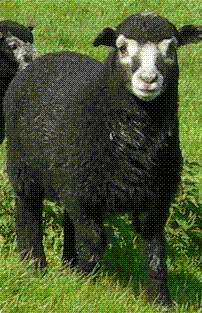Heritage sheep breeds vulnerable to disease outbreaks

Traditional sheep breeds should be given the same protection as rare breeds because their geographic concentration leaves them in a vulnerable position, according to a new report from the Sheep Trust.
The Sheep Trust team studied sixteen heritage breeds and found the majority were so highly concentrated in a single location that they would be extremely vulnerable to outbreaks of disease.
“Around 95% of Herdwicks, for example, are still found within 23km of Coniston,” said Professor Dianna Bowles, founder and chair of The Sheep Trust.
“Similarly, the same proportion of the South Wales Mountain breed is found less than 26km from the coal fields of the Rhondda Valley. Another good example is the South Country Cheviot, which remains concentrated in the Cheviot Hills of the Scottish Borders.”
These heritage breeds are important for a number of reasons, she said. “They matter to local culture and rural communities. They are an inherent part of the landscape and are adapted to those environments, often allowing low input, extensive farming systems.”
Heritage breeds differ from rare breeds in that they are commercially farmed and still exist in substantial numbers.
“They are a significant part of the UK sheep industry. But despite being at risk from their geographical isolation, they don’t have the legal protection given to rare breeds,” said Prof Bowles.
Measures that the Sheep Trust would like to see introduced include the standardisation of record keeping across sheep breed societies and new conservation programmes for each breed.
“Markets are important too. If the public asks for lamb from these breeds, it supports their commercial farming and contributes to the sustainability of low input farming systems.”
“Thanks to this study, we now have a detailed census of flocks done with latest GIS mapping technology. This means we know the exact distribution of regional breeds and their vulnerability,” said Prof Bowles.
Vet Amanda Carson has had first hand experience of the devastation that a disease can cause when it hits the region in which a breed is concentrated.
“In 2001, foot-and-mouth disease destroyed huge numbers of Herdwicks, South Country Cheviots and Rough Fell sheep in Cumbria,” she said. “At that time, these breeds came close to being eliminated.”
The risk is also there for other breeds. “The Romney is the breed situated closest to mainland Europe,” she said. “This puts it at quite a risk from blue-tongue virus, especially if the disease spreads and vaccination is not taken up by farmers.”
The Sheep Trust report is being presented to the UK National Standing Committee on Farm Animal Genetic Resources later this week.
Can you identify this breed of heritage sheep. There’s some disgreement over what it actually is?
